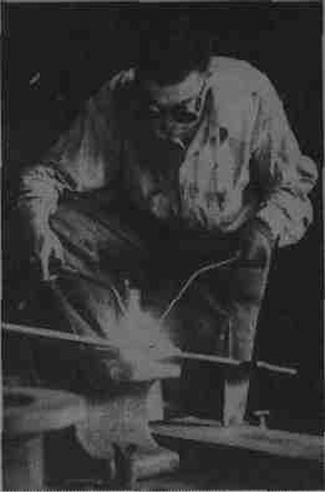Andrew Graham-Dixon discusses sculptor David Smith with Anthony Caro
ANTHONY CARO first met Da-vid Smith in New York in 1959, at a party given by the Abstract Expressionist painter Robert Motherwell. "We never really talked about art, then or later, even though we became close friends. David preferred to talk about mushrooms or hunting he was very macho, but most artists were in those days."
Surviving photographs of Smith reinforce this image; they record a bullish, physical brute of a man, engaged in a series of blue-collar activities (welding, soldering, hammering) more commonly associated with the factory floor than the artist's studio. (Even his name has solid artisan associations.) Smith worked in a car factory in his youth and later referred to that experience as his real artistic training. "The truth is," says Caro, "that David was always a little uncomfortable about being an artist. I think he felt as if he should have been doing some-thing a bit more useful, perhaps more of a man's job."
Although Smith's work is not widely known in this country (one of the rare exceptions being Cubi XIX, a late stainless steel sculpture meant for outdoor display which has long languished in a poorly lit space in the Tate) it has been absorbed, by sculptors like Caro or Philip King, into the tradition of modern British sculpture. After Caro had been to America for the first time, he adopted Smith's medium (steel) and method (assemblage), and he still recalls the sense of liberation that it gave him.
"When I was a student, sculp-tors were looked on as muscle men; they went out and carved these great chunks of stone all day. They weren't thought to have any brains, simply because all their energy had to go into the mastery of the craft. Once...


